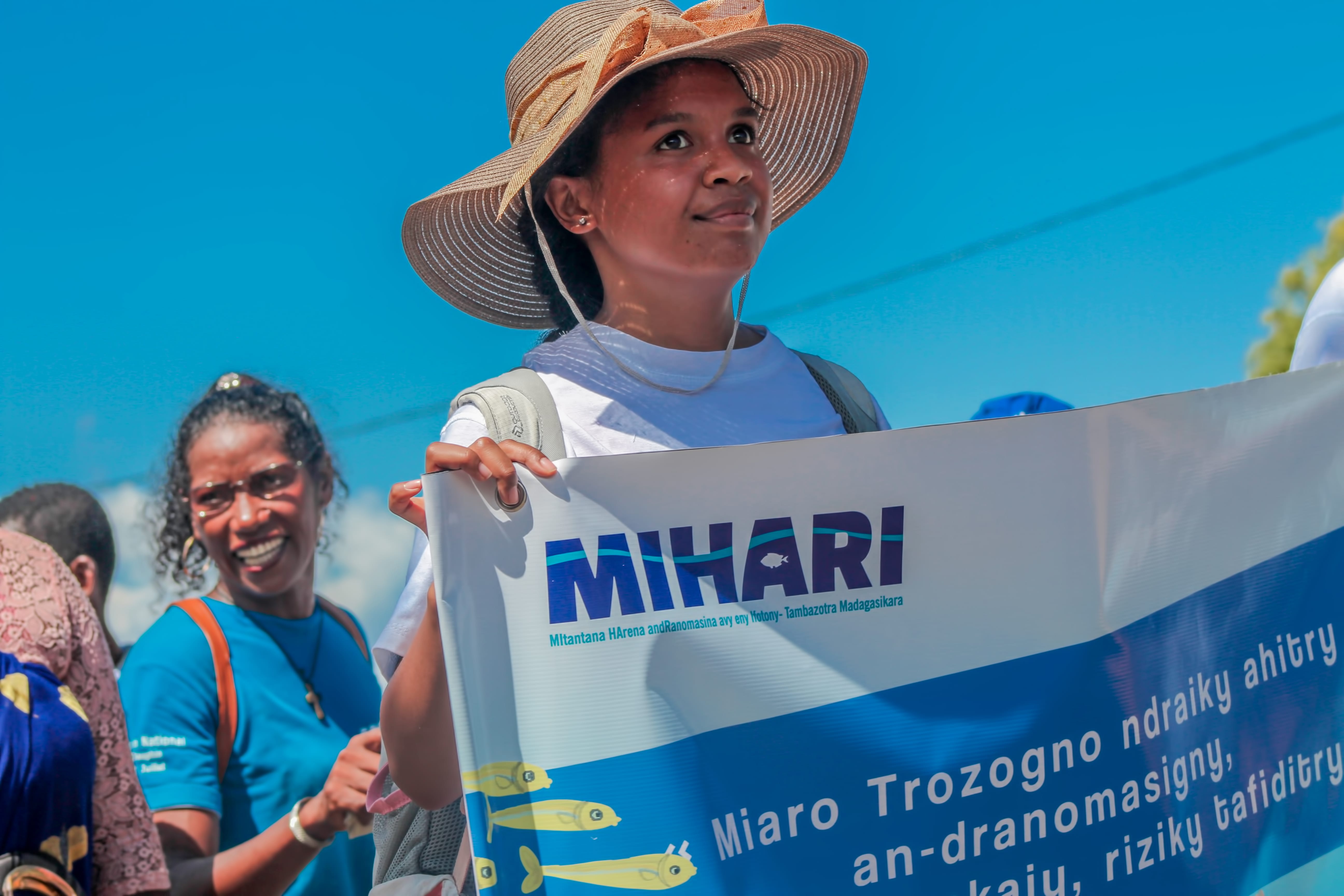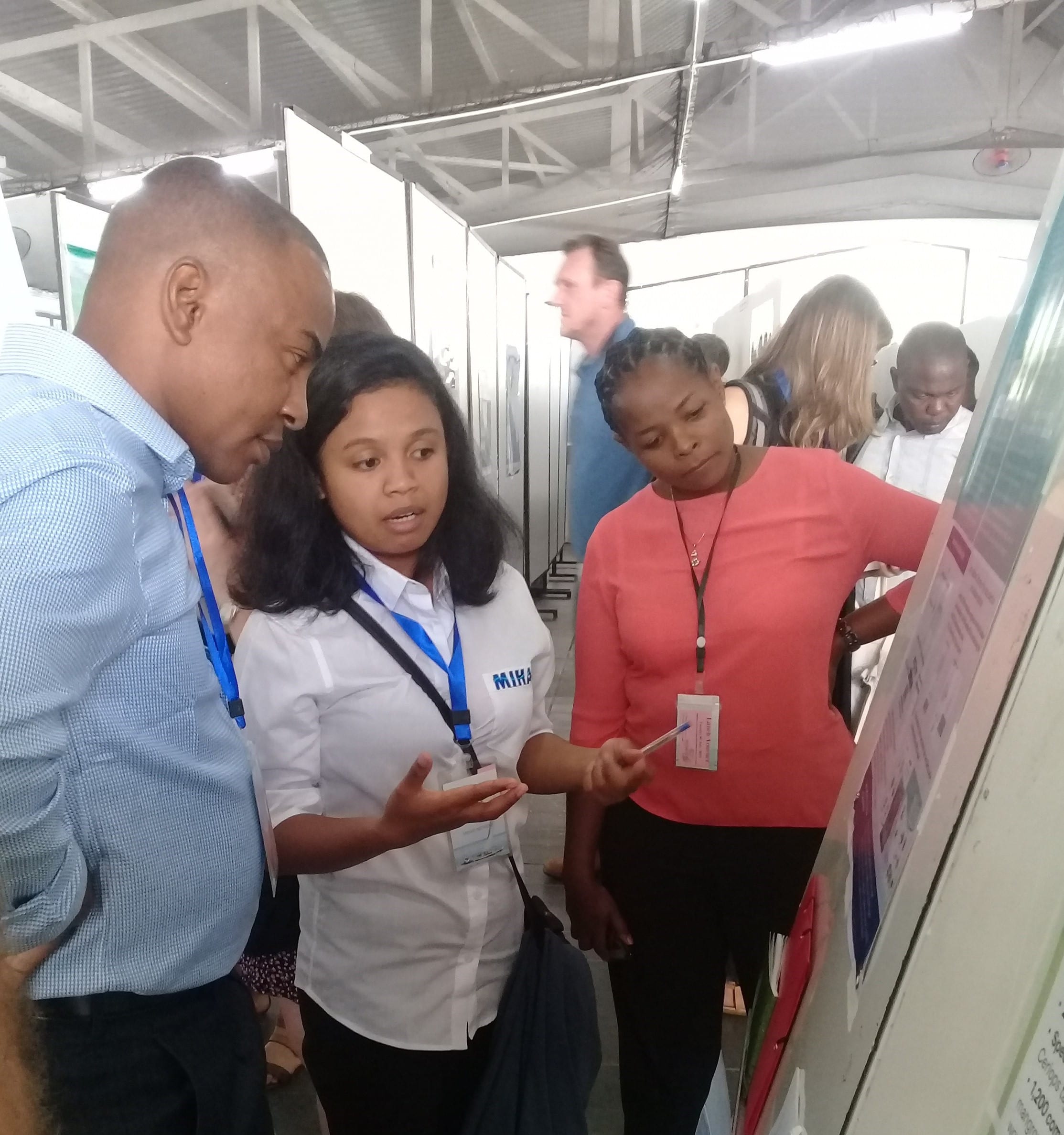
MIHARI participated in its third Symposium of the Western Indian Ocean Marine Science Association (WIOMSA). After the 2015 and 2017 Edition, MIHARI was represented by Prisca Ratsimbazafy during the last symposium held in Maurice from July 1 to July 6. Young environmentalist, nature lover, Prisca shared with us her journey and her trip to Mauritius.
Tell us more about you and your journey
I am interested in everything related to the well-being of our environment. I was born and raised in Antananarivo, the capital of Madagascar. After my baccalaureat in 2013, I had the opportunity to continue my studies in the United States of America, at the University of Lafayette where I obtained a BSc in Environmental Science after four years of study. I came back to Madagascar in 2017 and worked as a consultant at the Wildlife Conservation Society, where I supported the organisation of a seagrass monitoring and evaluation workshop before joining MIHARI as a trainee. After that, I took on the role of MIHARI’s Database Manager, a position in which I evolve and learn every day.
What were the challenges and your biggest motives that pushed you to be in the environment field?
I have always wanted to do something for the environment in Madagascar. I love forests, I have always been interested in reforestation and was convinced that this was my professional path. It was after my studies and my interventions with WCS and MIHARI that I discovered the marine world; for me there was no doubt, I was immediately seduced.
What did you learn during your six-month internship at MIHARI?
Professionally speaking, my internship at MIHARI has brought many rewards. Through this great Network I have worked with our partners and learned about the coastal communities of Madagascar, offered many new horizons. Without having previously known what a LMMA is, I’m now aware of the importance of the approach as well as having an understanding about these LMMAs in the context of community-based natural resource management. The efforts of communities and partner organisations are still being strengthened to meet the requirements for the conservation and management of marine resources and sustainable development.
How effective is the database for LMMAs in Madagascar?
Previously, LMMA operated separately, often in isolation. Their actions and characteristics were unknown. From now on, with the gathering of data by the Network, our partner organisations know each other better in terms of activities and manage to optimise their collaboration with the LMMA leaders, especially with regard to the exchange of good practices. Thanks to these exchanges, the preservation of marine resources is strengthened and the efforts that each LMMA leader and partner organisation invests in LMMAs are now measurable and can be replicated elsewhere.
Tell us more about your experience at the scientific symposium WIOMSA 2019
The WIOMSA Symposium is one of the major annual events for those concerned with the marine environment, including students, scientific researchers and professionals. To witness the commitment of all stakeholders to make progress on the sound management of marine resources in the western Indian Ocean region was inspiring. Major themes, including coral reefs, ocean currents and plastic pollution were discussed in the different sessions of the symposium. On behalf of the MIHARI Network, I shared our work on the databases and the definition of the criteria of an LMMA in Madagascar.
This was my very first visit to Mauritius, and in fact I found it reminiscent of Madagascar. The island fascinated me, and I will surely return one day. In short, the six-day visit has been a springboard for me into the marine scientific world. I am also proud to have been a sort of ambassador for the LMMA approach at such an influential event.
Which theme particularly interested you?
Chris Golden presented his research on the correlation between declining fish stocks and human health on the east coast of Madagascar. I related to his talk because he clearly explained the interdependence between health and the environment, moreover in a Malagasy setting and with LMMA members of the MIHARI Network. In the presentation video, North East Regional President Freddy Velozandry was interviewed and it made me happy to see familiar faces representing our country.
To return to MIHARI’s work on the databases and criteria for defining what an LMMA is in Madagascar, how did the participants respond?
The concept definitely interested them. The participants I spoke to were curious about MIHARI's data collection method and accessibility. I was delighted to approach the unique synergy between all MIHARI partner organisations, institutional partners and of course the LMMA managers we work with every day.
Regarding the LMMA guide in Madagascar, which is still being developed by the Network, it has received good feedback on both its form and content.
I believe that for a big country like Madagascar with more than 5,000 kilometers of coastline, we have a lot of good practices to share.
What is your outlook for the MIHARI database following your participation in WIOMSA?
All Network members are working hard on how to define a locally managed marine area in Madagascar. As I mentioned earlier, the guide defining an LMMA is being finalised at this time, and it will be an important first for Madagascar. It is a process that we are working hand in hand with LMMA community managers, partner organisations and the authorities.
In the meantime, we have already released a report on the LMMA data in Madagascar. We have produced a simple and engaging visualisation to allow the general public to understand the importance of LMMAs in the sustainable management of marine resources in Madagascar.
At MIHARI, we recognise our mission to raise the voices of small-scale fishers is urgent and ambitious. I feel it is both a challenge and an honour to contribute to the work of MIHARI as we strive to fulfil our mission.
 Prisca Ratsimbazafy explaining her poster during WIOMSA
Prisca Ratsimbazafy explaining her poster during WIOMSA
